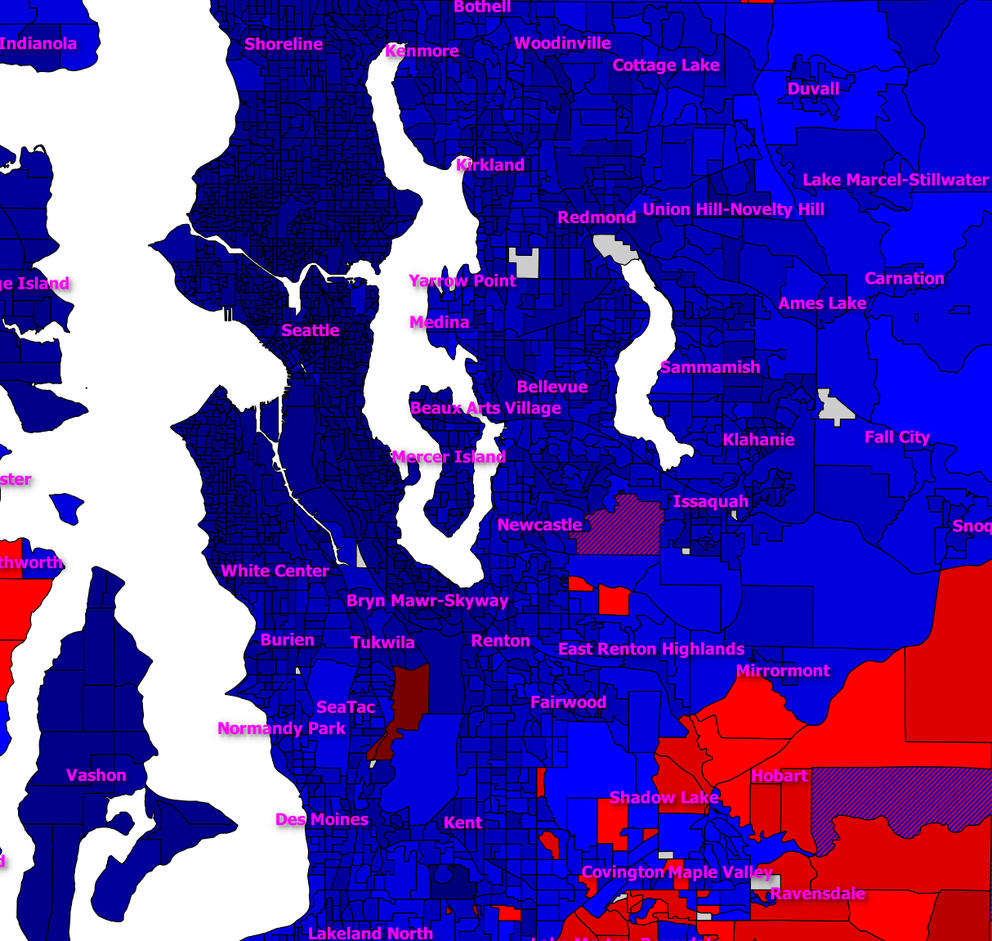It’s been called global warming’s evil twin. Scientists have pegged it as the culprit behind low shellfish harvests, and some researchers warn that it will kill off some of the main players at the base of the marine food web.
Commonly called ocean acidification, the phenomenon occurs when carbon dioxide infiltrates the sea, changing the water chemistry and thus lowering the pH. And while we usually think of it in the context of a global affliction — it is driven by the same rise of CO2 in the atmosphere that also drives climate change — a report released Monday points out that it is also a local problem, with uniquely local solutions.
In short: If we’re worried about Puget Sound’s acidifying waters, we should clean up the wastewater that we’re pouring into it.
The report, released by the nonprofit California Ocean Science Trust and written by a panel of 20 scientists in California, Oregon and Washington, still points to global CO2 emissions as the dominant cause of ocean acidification. The researchers’ top recommendation is for the world to get its collective act together and finally start reducing those emissions.
But they also point out that when we dump nitrogen and carbon into Puget Sound as outflow from municipal wastewater treatment plants, and runoff from farms and lawns, this decreases the pH of our surrounding marine waters, too.
When excess nutrients enter the Sound, it can send marine algae into overdrive, resulting in oxygen-deprived areas at depth when the algae dies. This is because it creates a feeding frenzy by bacteria whose respiration process consumes O2 and produces CO2. More CO2 in the waters means that water becomes even more acidified.
“Puget Sound is an urbanized estuary,” University of Washington scientists Terrie Klinger and Jan Newton, who sat on the panel, told Crosscut by email. “Estuaries are areas where production is naturally high and as a consequence respiration typically is high. In areas where human inputs are substantial, such as those adjacent to urban areas, some of these inputs add to natural production and respiration. Where this occurs, ocean acidification conditions can be intensified.”
According to the report, “the West Coast of North America will face some of the earliest, most severe changes in ocean carbon chemistry.” This is because ocean currents and upwelling brings to our shores seawater that is already naturally rich in CO2, and is projected to become more and more unnaturally rich in CO2 every year thanks to all that pollution that we’re pumping into the air.
Newton and Klinger point out that Puget Sound is even more susceptible to ocean acidification than other West Coast waters, because “we see the combined effects of upwelled, low pH ocean waters transported into the Sound, plus local inputs (e.g. nutrients, carbon, and perhaps others) that can increase CO2 and decrease oxygen.”
The report sheds light on just how complex ocean acidification is, and why predicting its impacts is a very tricky task.
Ocean acidification has been one of the most studied oceanic phenomena over the past few years. However, even while study after study has demonstrated that ocean acidification is occurring and that more acidic waters can harm marine organisms, some within the scientific community argue that researchers need to approach the topic with a broader perspective, because it is still relatively little-understood, and the impacts will vary widely depending on locale.
The European-based ICES Journal of Marine Science published a special issue on ocean acidification last month. The lead article, written by Editor-in-Chief Howard Browman, calls for more skepticism on the topic. A decade ago, he writes, most of the studies on ocean acidification were carried out in a lab. More recently, studies have looked at acidification in the real world, where it combines with other factors, such as temperature changes, oxygen levels and salinity. “Such studies typically report that the additional driver has a stronger effect than CO2,” Browman says.
The rest of the issue is full of studies of all sorts, including some that found little or no effect of, or mixed effects from, ocean acidification. While it does not question the overriding reality of acidification, it presents the issue as much more complex than the reductive “animal-in-a-bucket” studies.
Because the oceans are so vast and complicated, it can be difficult to know exactly what stressor caused a particular calamitous event. For example, is a particular decline in oysters due to emissions-related acidification, a natural upwelling event, increased nutrients in the water, or a change in temperature? Oftentimes the connections aren’t linear, and it can be difficult to untangle the web.
Which is why the report also calls for reducing “co-occurring stressors” on marine systems, such as increasing temperature and loss of habitat. Other recommendations for local action include removing CO2 from the water by planting seagrass, and revising water quality rules to reduce local contributions to acidification.
The benefits of taking such actions will be greatest in estuaries like Puget Sound, the report says, where local processes dominate over oceanic ones. And it’s something we can change without waiting for the whole world to take action.
Correction: The original version of this story suggested that algal growth causes oxygen-deprived “dead zones” in marine ecosystems. In fact, the primary cause is the decomposition of algae by bacteria.


